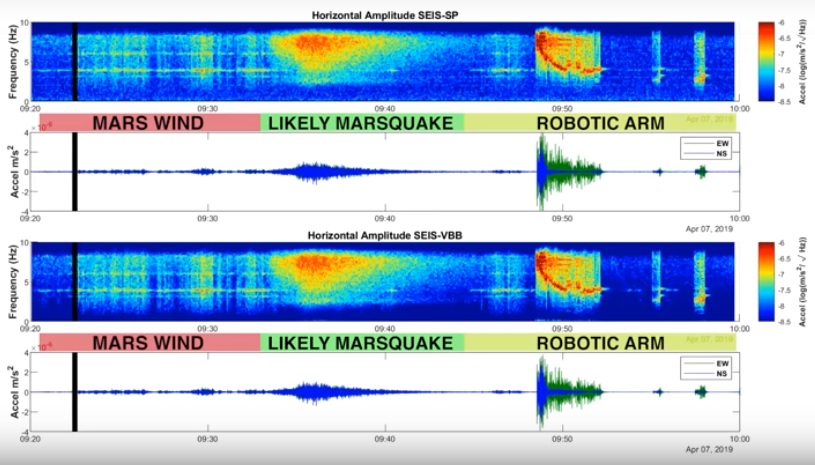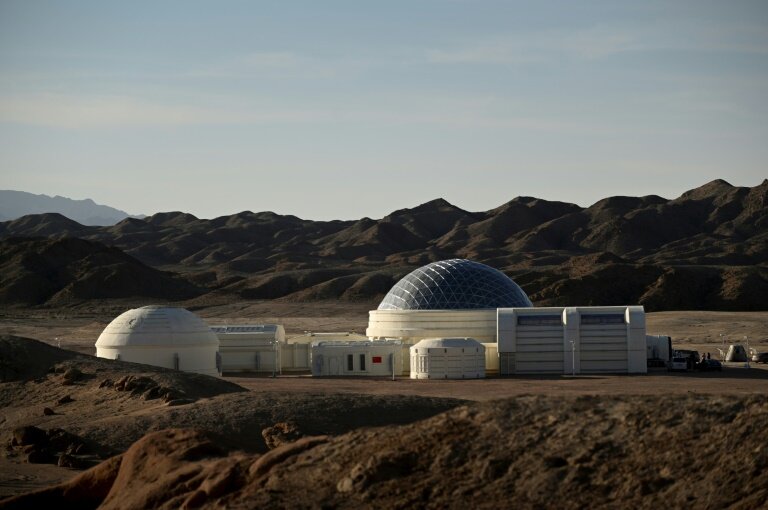
(Image Credit: NASA/JPL-Caltech/CNES/IPGP/Imperial College London)
The NASA Insights Lander, a new resident of Mars, has as one of it’s primary missions the monitoring of potential seismic events which can provide additional detail about the Martian interior. Insight’s seismometer was placed on the planet’s surface on December 19th, 2018, since which time it has registered three other signals, on March 14 (Sol 105), April 10 (Sol 132) and April 11 (Sol 133). The exciting event took place on Sol 128, and was the largest of all signals so far detected, making it likely to be connected to a real Marsquake.
While the idea of earthquakes is all too familiar to residents of Earth, those are caused by faults created through the movement of tectonic plates. On Mars, which does not have tectonic plates, the quakes are thought to be caused by an ongoing cooling and contraction process which results in stress and similar quake phenomenon. Learning more about that process will help us to better understand our neighbor planet. And, I like to speculate, the more we learn about the interior of Mars, the better chance we may have of restarting the core some day, and re-inducing a magnetic field to contribute to terraforming efforts. But that’s a little way down the road!
References:


